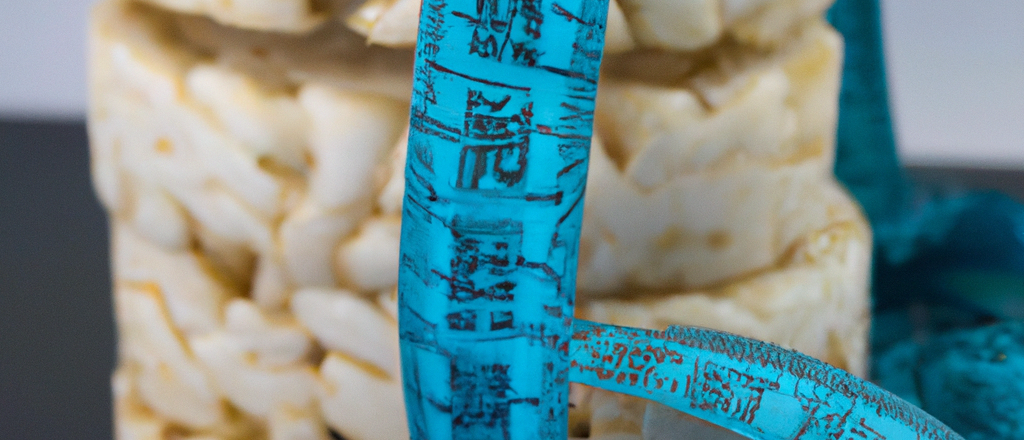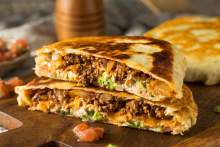Are rice cakes keto friendly? (Full guide)
The Keto diet has taken the world by storm, heralded for its impressive weight loss and health-enhancing potentials. This low-carb diet highlights a high intake of healthy fats, transforming the body's energy resource from carbs to fat, promoting fat burning and subsequently, weight loss. For those committed to this diet, a common dilemma is whether rice cakes, specifically those made from white rice, are an acceptable food item, given their carb content.
Unraveling the Mystery of Rice Cakes
Rice cakes, a staple of the Korean diet, are crispy delights made from puffed rice, offering a delightful alternative to bread. They come in a variety of flavors, catering to diverse palates, and serve as a lower-calorie alternative to snack foods like potato chips. Especially in Korean culture, rice cakes, have been a delicious Korean snack for a long time, relished for their sweet flavor and crunchy texture. Their global popularity stems from their reputation as a healthy snack and a perfect bread replacement, providing nutritional value and being a good option for those seeking weight loss.
These rice products are revered for being a healthy weight management food item, especially white rice cakes, and brown rice cakes which are seen as a healthier, whole grain option. They have been consumed for their believed health benefits and lower carb content compared to bread or crackers, making them a potentially good option for those on a keto or low-carb diet. While rice cakes are low cal and low fat, they are not a significant source of protein or healthy fats, and those following a strict ketogenic diet may need to consider their net carb consumption and ideal macronutrient ratio while including them in their meal plans.
Nutrition Components
Generally low in calories and fats, a single rice cake has approximately 35-40 calories, but this can vary based on the type of rice cake and brands of rice cakes, especially if there are added sugars or other food additives. Despite being a good option in terms of caloric intake, rice cakes, predominantly made from rice flour, are rich in carbs and can pose a challenge for those following a keto diet or aiming to maintain a low carb count.
Incorporating rice cakes, particularly those with fewer carbs like caramel rice cakes, necessitates keen observation of nutrition facts, ensuring the intake aligns with one's carb intake targets on a keto or low-carb diet. Reading the nutrition label and being mindful of the grams of carbohydrates can aid in making informed choices, ensuring a balanced approach to diet and nutrition, especially for those aiming for blood sugar levels management and weight loss.
Can Rice Cakes be Integrated into a Keto Diet?
Incorporating rice cakes into a keto diet, where the majority of your foods should be high in healthy fats and low in carbs, can be intricate due to their carb content. Understanding the concept of “net carbs”—the total carbs minus dietary fiber, which impacts blood sugar levels and insulin levels—can provide insights into whether rice cakes are keto-friendly.
Although they may not be the best choice for those aiming to maintain strict ketosis, being informed about the grams of net carbs and choosing rice cakes with no non-keto ingredients like artificial sweeteners can help in maintaining an ideal daily net carb allowance. This can make the integration of rice cakes into a keto or low-carb diet smoother and more beneficial.
Pros of Incorporating Rice Cakes in Keto Diet
While rice cakes are not inherently low-carb foods, incorporating them does come with potential health benefits. For instance, some rice cakes, especially brown rice cakes, have high dietary fiber content, which aids digestion and can help manage blood sugar levels. Incorporating them as part of a healthy diet can, for good reason, support overall well-being, provided they are consumed in moderation and balanced with foods rich in healthy fats and proteins.
Being mindful of the type of rice cake consumed, and balancing them with other nutrient-dense foods, like hard-boiled eggs or those topped with peanut butter or cream cheese, can contribute to achieving nutritional balance, making them a great option for those on a keto or low-carb diet.
Weight Management with Rice Cakes
For individuals aiming for healthy weight management, rice cakes can be a viable, low-carb snack, allowing enjoyment without fear of excessive calorie intake. However, the key is not just to focus on the calorie content but also on the nutritional value, ensuring the intake of essential healthy fats and proteins.
Balancing them with other nutrient-dense foods like those rich in healthy fats and proteins is crucial. Consuming rice cakes, while ensuring the intake of other foods rich in healthy fats like avocado, can be a great way to enjoy a variety of flavors without compromising the goals of a keto or low-carb diet.
Risk Elements and Considerations
Including rice cakes in a diet comes with its own set of considerations, particularly due to their high glycemic index, which can impact blood sugar levels and, subsequently, ketosis negatively. Thus, those on a low-carbohydrate diet must be cautious and monitor their blood sugar levels diligently, noting any adverse reactions post-consumption.
Reading nutrition labels carefully is imperative to avoid common ingredients that might cause allergies and to ensure that the rice cakes align with dietary needs and preferences. Balancing rice cakes with sour cream or other foods that are high in healthy fats can be beneficial in maintaining stable blood sugar levels and staying within the desired carb intake range on a keto or low-carb diet.
Moderation is Key
Moderation is crucial when considering rice cakes as a healthy snack on a keto diet. While they might offer a lower calorie alternative, balancing them with other nutrient-dense foods is imperative. Consuming rice cakes should be balanced with foods rich in essential fats and proteins, such as those with peanut butter or cream cheese, providing grams of net carbohydrates that align with one’s carb intake targets on a low-carb diet.
Understanding the nutritional implications of rice cakes and consuming them in moderation can help maintain balanced nutrition. Balancing indulgence with nutritional value ensures that the consumption of rice cakes doesn’t hinder the attainment of dietary goals and overall well-being, satisfying even the strongest cravings without compromising health.
Exploring Keto-Compatible Rice Cake Alternatives
While the original rice cake may not be the best fit for a low-carb diet due to its high grams of carbs, the good news is that there are low-carb substitutes available in grocery stores. These alternatives, often made with ingredients like cauliflower or flaxseed, reduce the total carbs while enhancing the fiber content and healthy fats, making them a great option for those on a keto diet.
New keto-friendly snack options like cauliflower rice cakes are becoming increasingly popular in the United States, providing a viable alternative to traditional rice cakes, fulfilling the exact opposite of the macros typical of glutinous rice-based products. These low-carb substitutes can be included as part of a healthy, low-carb diet, catering to the carb content and dietary fiber requirements of those on strict ketogenic diets.
Verdict
In conclusion, while traditional rice cakes may not align perfectly with the keto macros calculator due to their carb content, there are keto-friendly alternatives available that can be included as part of a healthy, low-carb diet. The power of whole, nutrient-dense foods coupled with mindful eating can make the journey on a strict ketogenic diet fruitful and fulfilling.
It's important to remember that selecting foods that support unique health objectives and lifestyle is crucial. By maintaining a balanced and mindful approach, one can enjoy the benefits of a keto diet while relishing a variety of flavors and maintaining optimal health.
Additional Tips
For those with a sweet tooth, opting for rice cakes with no added sugars or artificial sweeteners can be a great way to satisfy the strongest cravings without compromising diet goals. Toppings like cream cheese, sour cream, or peanut butter can transform a plain rice cake into a delicious Korean snack, while hard-boiled eggs can add significant protein content. Moreover, opting for brown rice cakes or those made with rice flour can offer more nutritional benefits compared to white rice cakes.
When considering rice cakes as a snack, it's vital to look for those with long shelf life and fewer carbs, ensuring they fit into your carb content targets. Be mindful of brands offering a variety of flavors but may contain non-keto ingredients, impacting your low carb count goals.
It’s essential to understand that including rice cakes or any other low-carb snack should be done in a way that supports maintaining healthy blood sugar and insulin levels, and promotes a healthy weight while experiencing the health benefits of a keto diet.
Choosing wisely, reading nutrition labels, and understanding the nutritional values of each type of rice cake can enable you to enjoy this delicious snack while still adhering to your low-carb lifestyle.
EXTRA: Kim's Magic Pop's
Kim’s Magic Pop has gained notable recognition as a popular snack food, particularly among those endeavoring to follow a low-carb diet. These rice crackers represent a fascinating amalgamation of taste and health, providing a crunchy alternative to the conventional rice snack. Often viewed as rice cakes, they bring forth the question of being keto-friendly due to their composition and nutritional profile. The lightweight, airy texture coupled with diverse flavors has made Kim’s Magic Pop a sought-after snack, gaining acceptance for being relatively lower in carbs, fat, and calories per g serving, making it a viable option for those mindful of their dietary intake.
However, the pursuit of aligning Kim’s Magic Pop with a low-carb or keto diet necessitates a deeper understanding of its nutritional aspects, particularly the g serving and g fat, ensuring it aligns with the human body's nutritional needs and metabolic processes while on such diets. Balancing its consumption while maintaining a varied and balanced diet can potentially allow individuals to enjoy this delicious snack without compromising their dietary goals and physiological well-being. This focus on balance and moderation is crucial in determining whether products like Kim’s Magic Pop can be seamlessly integrated into one’s dietary regimen without hampering the nutritional equilibrium.






Leave a review or comment